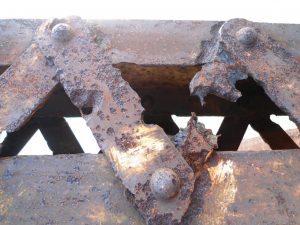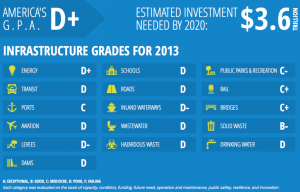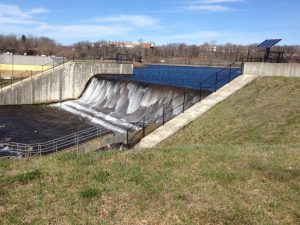From May 13-20, the seventh annual Infrastructure Week is taking place with the support of hundreds of affiliates across the country. Infrastructure Week was created to help raise awareness for our country’s growing infrastructure needs and stress the message that we must #BuildForTomorrow. Led by a coalition of businesses, labor organizations and policy organizations, this week will unite the public and private sector to send this important message to leaders in Washington and beyond.
No matter where you live, your age, your education, if you drive a car or a truck or take the bus or a bicycle, infrastructure has a profound impact on your daily life. We all have to get around. We all need lights to come on and water to come out of the tap.
Consequently, too much of our nation’s infrastructure is under-maintained, too old, and over capacity. When it comes to water infrastructure alone, we are dealing with a massive network of pipes that are well over 100 years old. In short, droughts in western states have caused wells and reservoirs to fall dangerously low; saltwater intrusion of Florida’s drinking water infrastructure, and dam and levee failures in California, South Carolina, and Louisiana have caused evacuations and put hundreds of thousands of people and homes at risk.
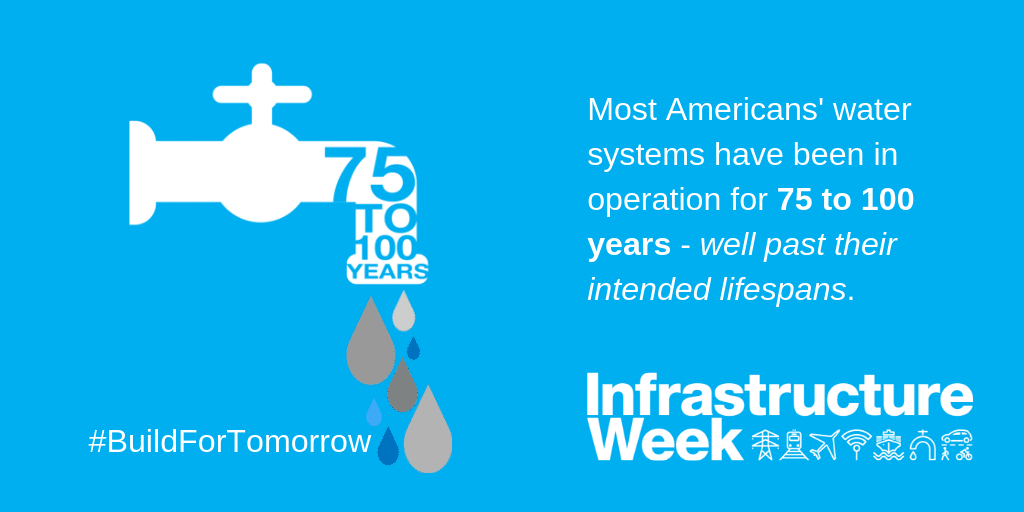
The High Cost of Water Infrastructure
And this is just the tip of the iceberg. A study conducted by the American Water Works Association revealed that the cost to replace our nation’s water infrastructures would cost more than one trillion dollars over the next 25 years.
No state, city, or county alone can tackle the growing backlog of projects of regional and national importance, and Americans get it: more than 79 percent of voters think it is extremely important for Congress and the White House to work together to invest in infrastructure.
For years, near-unanimous, bipartisan support for infrastructure investment has been steadily increasing. Leaders and voters have been rolling up their sleeves to spark efforts in the rebuilding and modernizing of transportation, water, and energy systems. Certainly, large strides have been made as a country, but there is still a lot to be done.
Every four years, the American Society of Civil Engineers (ASCE) publishes The Report Card for America’s Infrastructure, which grades the current state of the nation’s infrastructure on a scale between A and F. The last survey from 2017 gave tremendous insight into the state of our infrastructure surrounding drinking water, dams, and wastewater.
Drinking Water Infrastructure
The drinking water that we get in our homes and businesses all comes from about one million miles of pipes across the country. While the majority of those pipes were laid in the early to mid-20th century, many are showing signs of deterioration. There are many reasons for a water main to break including localized influences such as aggressive soil and weather conditions, as well as poor design/construction. Approximately 240,000 occur each year, consequently resulting in the waste of two trillion gallons of treated drinking water. Drinking Water received a grade of D.
Dams
The average age of the 90,000+ dams in the United States is 56. Nearly 16,000 (~17%) have been classified as high-hazard potential. Dam failures not only risk public safety, they also can cost our economy millions of dollars in damages as well as the impairment of many other infrastructure systems, such as roads, bridges, and water systems. As a result, emergency action plans (EAPs) for use in the event of a dam failure or other uncontrolled release of water are vital. As of 2015, 77% of dams have EAPs – up from 66% in the last 2013 Report Card. Dams received a grade of D.
Wastewater
There are approximately 15,000 wastewater treatment plants across the U.S that are critical for protecting public health and the environment. In the next 15 years, it is expected that there will be 56 million new users connected to the centralized treatment system. This need comes with an estimated $271 billion cost. Maintaining our nation’s wastewater infrastructure is imperative for the health and well being of the 76% of the country that rely on these plants for sanitary water. Wastewater received a grade of D+.
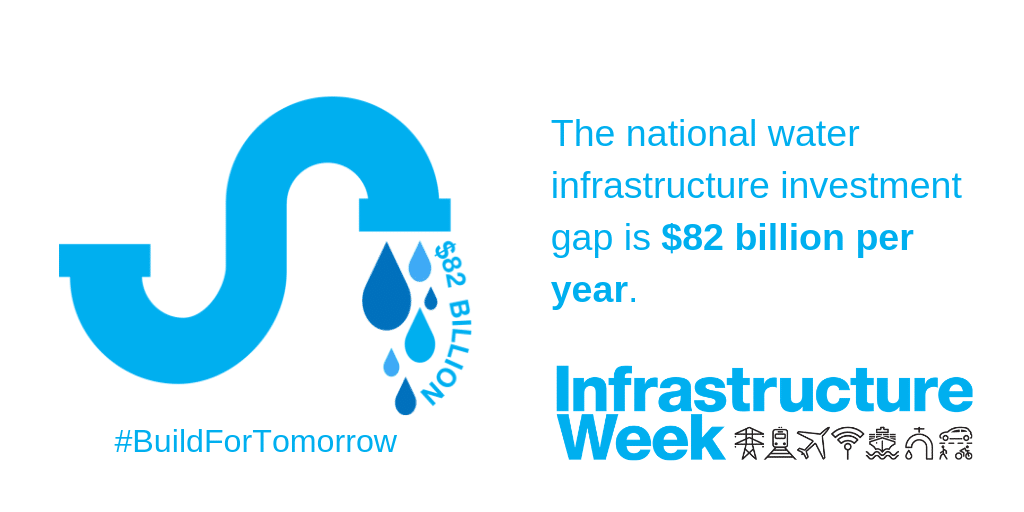
In the water sector alone, it’s clear how heavily we rely on solid infrastructure. If the issues in our nation’s water infrastructure are not addressed, millions of people as well as our environment will be at risk. Many communities around the country are working hard to deliver projects to solve these problems – but there is always more to be done. Reversing the trajectory after decades of under-investment requires transformative action from Congress, states, infrastructure owners, and the American people. Join us this week to help spotlight the continued advocacy and education of infrastructure needs. Afterall, this is the true foundation that connects our country’s communities, businesses, and people.

 There are few – very few – issues that have as much bipartisan support today as investing in our nation’s infrastructure. We all have experienced dodging potholes while we drive, waiting for a bus that feels like it is never going to come, or being packed like sardines in an overcrowded airport for an interminable amount of time. We have all read the stories about the
There are few – very few – issues that have as much bipartisan support today as investing in our nation’s infrastructure. We all have experienced dodging potholes while we drive, waiting for a bus that feels like it is never going to come, or being packed like sardines in an overcrowded airport for an interminable amount of time. We have all read the stories about the 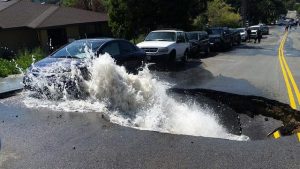

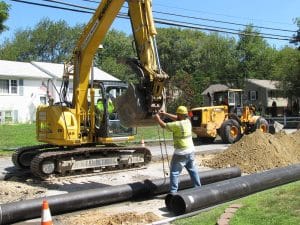
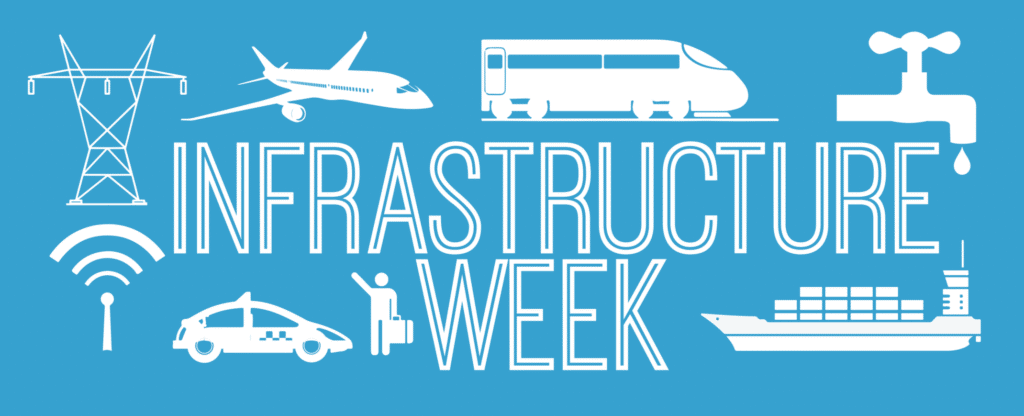 It is scary to realize how complacent our country has become in accepting crumbling infrastructure as the norm. Our international competitors are investing more in high speed rail, modern airports, and bigger shipping ports, while just about every few months, some kind of preventable catastrophic infrastructure event happens in America. Yet our leaders are still not spurred into taking decisive action.
It is scary to realize how complacent our country has become in accepting crumbling infrastructure as the norm. Our international competitors are investing more in high speed rail, modern airports, and bigger shipping ports, while just about every few months, some kind of preventable catastrophic infrastructure event happens in America. Yet our leaders are still not spurred into taking decisive action.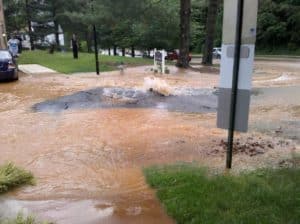

 During Infrastructure Week, groups are coming together to recognize progress and leadership at the federal, state, and local levels – and there is much to celebrate. For example, communities throughout New England have been proactive in lead service line replacement, and the Massachusetts Water Resources Authority
During Infrastructure Week, groups are coming together to recognize progress and leadership at the federal, state, and local levels – and there is much to celebrate. For example, communities throughout New England have been proactive in lead service line replacement, and the Massachusetts Water Resources Authority 
